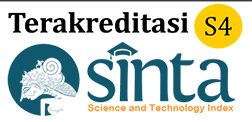Keunggulan, Tantangan, dan Rekomendasi Kebijakan akan Pengembangan Energi Panas Bumi di Indonesia
DOI:
https://doi.org/10.37525/mz/2020-2/263Keywords:
panas bumi, transisi energi, energi terbarukan, kebijakan, IndonesiaAbstract
Sebagai negara yang duduk di wilayah Cincin Api Pasifik, Indonesia merupakan negara kedua terbesar yang memiliki potensi energi panas bumi di dunia. Energi panas bumi merupakan salah satu jenis energi terbarukan yang bersih sehingga tidak hanya dapat menurunkan emisi Gas Rumah Kaca (GRK) nasional namun juga menjaga suplai energi listrik di masa mendatang. Melalui Rencana Umum Energi Nasional (RUEN), pemerintah Indonesia menargetkan pembangunan kapasitas Pembangkit Listrik Panas Bumi (PLTP) sebesar 7200 MW pada tahun 2025. Namun, per tahun 2020, Indonesia baru mampu membangun kapasitas PLTP dengan total nilai sekitar 2100 MW. Studi ini bertujuan untuk menyoroti beberapa keunggulan yang dimiliki energi panas bumi dibandingkan jenis energi terbarukan lainnya, yaitu karakteristik alaminya yang ramah lingkungan, tidak bersifat intermittent, dapat dijadikan sebagai base load, dan tidak membutuhkan luas area yang besar. Selain itu, studi ini juga membahas mengenai kendala terbesar yang menyebabkan lambannya pertumbuhan kapasitas PLTP dan memberikan rekomendasi strategis yang dapat diambil oleh pemerintah dalam menghadapi kendala terbesar tersebut. Hasil studi ini memperlihatkan bahwa kendala terbesar dalam pengembangan PLTP terdapat pada tahap awal eksplorasi. Beberapa upaya telah dilakukan pemerintah Indonesia dalam mendukung kegiatan eksplorasi panas bumi. Namun studi ini berargumen bahwa masih terdapat beberapa langkah yang dapat diambil pemerintah untuk lebih mendukung kegiatan eksplorasi panas bumi di Indonesia seperti pendirian badan eksplorasi panas bumi serta pembiayaan kegiatan eksplorasi. Rekomendasi kebijakan ini diharapkan dapat menjadi terobosan langkah pemerintah Indonesia dalam pencapaian target PLTP 7200 MW pada tahun 2025.
References
Dirjen EBTKE (2017) Potensi Panas Bumi Indonesia Jilid 2, Kementerian Energi dan Sumber Daya Mineral.
Dirjen EBTKE (2018) Doing Business in Geothermal. http://igis.esdm.go.id/igis/img/Proses_Bisnis.pdf
Dirjen EBTKE (2020) Pengembangan Panas Bumi, Presentation, Kementrian Energi dan Sumber Daya Mineral.
ESMAP (2012) ‘Geothermal Handbook : Planning and Financing Power Generation’, World Bank Technical Report.
Fridleifsson, I. B., Bertani, R. and Huenges, E. (2008) ‘The possible role and contribution of geothermal energy to the mitigation of climate change’, IPCC Scoping Meeting on Renewable Energy Sources.
Intergovernmental Panel on Climate Change and Intergovernmental Panel on Climate Change (2015) ‘Technology-specific Cost and Performance Parameters’, in Climate Change 2014 Mitigation of Climate Change. doi: 10.1017/cbo9781107415416.025.
Judge, W. D., Xiao, Z. W. and Kipouros, G. J. (2017) ‘Application of rare earths for higher efficiencies in energy conversion’, in Minerals, Metals and Materials Series. doi: 10.1007/978-3-319-51085-9_4.
LatestGKGS (2020) Geography: Earth layer, earth composition, temperature, pressure. https://www.latestgkgs.com/geography-5298-a
Li, Y. et al. (2009) ‘Climate change and drought: a risk assessment of crop-yield impacts’, Climate Research. doi: 10.3354/cr00797.
Mackay, J. C. D. (2008) ‘Sustainable Energy — without the hot air Synopsis’, Energy.
Mary, R. T. et al. (2017) ‘Panas Bumi Sebagai Harta Karun Untuk Menuju Ketahanan Energi’, Ketahanan Nasional.
Masum, M. and Ali Akbar, M. (2019) ‘The Pacific Ring of Fire is Working as a Home Country of Geothermal Resources in the World’, in IOP Conference Series: Earth and Environmental Science. doi: 10.1088/1755-1315/249/1/012020.
McDonald, R. I. et al. (2009) ‘Energy sprawl or energy efficiency: Climate policy impacts on natural habitat for the United States of America’, PLoS ONE. doi: 10.1371/journal.pone.0006802.
Olivier, J. G. J. and Peters, J. A. H. W. (2020) ‘Trends in Global CO2 and Total Greenhouse Gas Emissions: Report 2019’, PBL Netherlands Environmental Assessment Agency.
Overland, I., Suryadi, B. and Win, U. T. (2018) ‘Energy Subsidy Reform: An International Comparative Perspective on Myanmar’, SSRN Electronic Journal. doi: 10.2139/ssrn.3023148.
PT Pertamina Geothermal Energy (2020).
PT SMI. (2020). ’Geothermal Resource Risk Mitigation’. https://ptsmi.co.id/wp-content/uploads/2020/09/Geothermal-Resource-Risk-Mitigation-GREM-PT-SMI.pd.
Purba, D. P. (2020) ‘Investigation on Geothermal Resource Assessment Methods in Reducing Exploration Risk in Indonesia Geothermal System’, Master of Energy Research Project Report in University of Auckland (unpublished).
Report, W. N. A. (2011) ‘Comparison of Lifecycle Greenhouse Gas Emissions of Various Electricity Generation Sources’, World Nuclear Association.
Setiawan, H. (2014) ‘Geothermal Energy Development in Indonesia: Progress, Challenges and Prospect’, International Journal on Advanced Science, Engineering and Information Technology. doi: 10.18517/ijaseit.4.4.405.
Yang, L. et al. (2014) ‘Progress in the studies on the greenhouse gas emissions from reservoirs’, Acta Ecologica Sinica. doi: 10.1016/j.chnaes.2013.05.011.46Volume 2 No 2 tahun 2020
Downloads
Published
How to Cite
Issue
Section
License
Copyright (c) 2020 Salma Zafirah Wisriansyah, Dorman Purba, Arnaldo Napitu

This work is licensed under a Creative Commons Attribution-NonCommercial-ShareAlike 4.0 International License.
Use, distribution, and adaptation of this work are permitted for non-commercial purposes, under the following conditions:
- Proper attribution must be given to the original author and source (journal), including citation of the title, author name(s), and link to the original version.
- Modifications or adaptations must be released under the same license.
- Commercial use, including republication for financial gain, is not allowed without written permission from the copyright holder.










